In the realm of modern document presentation, paper binding machines stand out as essential tools that merge functionality with innovation. These machines, designed to streamline the process of binding documents, have evolved significantly to offer a plethora of innovative features. From enhancing efficiency to elevating the aesthetics of bound materials, the innovative capabilities of paper binding machines are reshaping how we approach document presentation. One of the standout features of contemporary paper binding machines is their versatility in handling various binding styles. Traditional binding methods such as comb binding, wire binding, and coil binding are seamlessly integrated into these machines, allowing users to choose the most suitable style for their specific needs. This flexibility empowers businesses, educational institutions, and individuals to create professional-looking documents that make a lasting impression. Furthermore, the integration of automated binding mechanisms has revolutionized the efficiency of document binding processes. Another innovative aspect of modern paper binding machines is their compatibility with a wide range of paper sizes and types.
Automatic paper feeding, punching, and binding functionalities reduce manual labor and significantly accelerate production times. This not only increases productivity but also ensures consistent and high-quality results, making these machines indispensable in fast-paced environments where efficiency is paramount. In addition to streamlining the binding process, modern paper binding machines are equipped with advanced features that enhance the overall presentation of documents. One such feature is the ability to add covers and back sheets with ease, providing a polished and professional appearance to bound materials. Moreover, built-in trimming and edge-smoothing capabilities ensure clean and neat edges, further enhancing the visual appeal of the final product. The integration of digital technology has also played a crucial role in the evolution of paper binding machines. Many models now come with digital displays and programmable settings, allowing users to customize binding parameters such as margin size, hole punching patterns, and binding thickness. This level of control not only improves precision but also enables users to achieve tailor-made results for different types of documents.
Whether binding small booklets, large reports, or specialty documents, these paper binding machines can accommodate varying paper dimensions and weights, ensuring versatility and adaptability across diverse projects. This versatility is particularly advantageous for businesses and print shops that handle a wide array of document types. Moreover, sustainability features have become increasingly prevalent in modern paper binding machines. Many models now incorporate eco-friendly practices such as energy-saving modes, recyclable binding materials, and efficient use of resources during the binding process. These environmentally conscious features align with the growing emphasis on sustainability in today’s business practices, making paper binding machines not just efficient but also eco-friendly solutions. The innovative features of paper binding machines have redefined document presentation by combining functionality, efficiency, aesthetics, and sustainability. From versatile binding styles to automated processes, digital enhancements, and eco-friendly practices, these machines offer a comprehensive solution for businesses and individuals seeking to create professional and impactful documents. As technology continues to advance, we can expect paper binding machines to further evolve and shape the future of document presentation.
